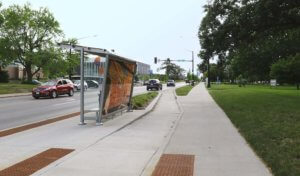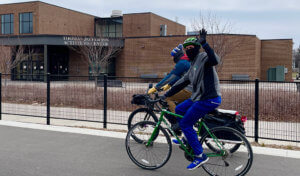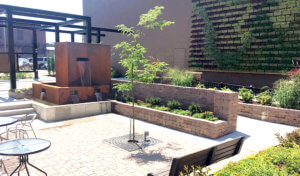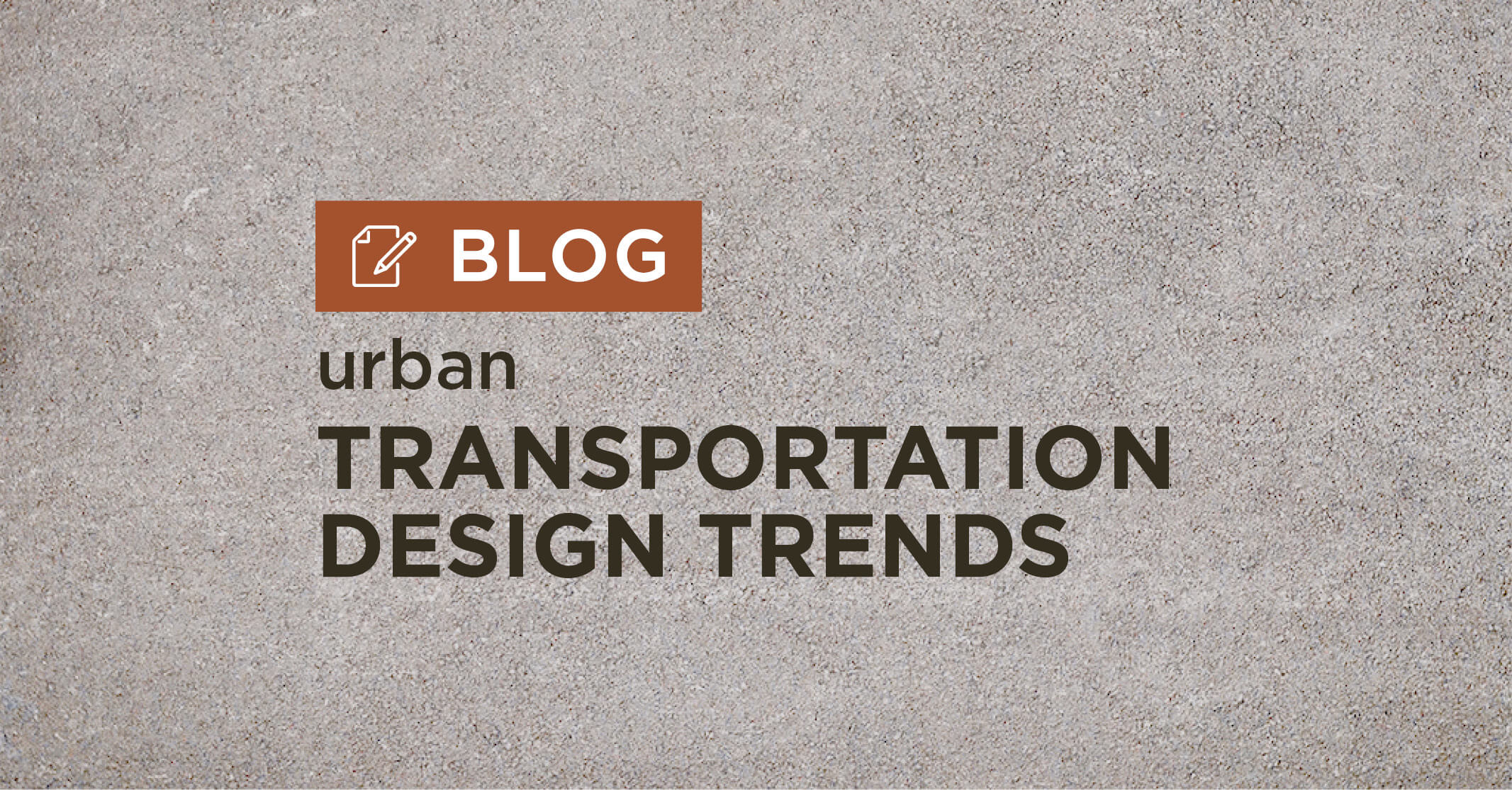Transforming Urban Landscapes: Exploring Sustainable Transportation Design Trends
Transportation profoundly influences urban spaces, shaping their design and functionality. As engineering, planning, and design experts, we understand transportation’s pivotal role in addressing the challenges posed by population growth, environmental concerns, and the need for efficient mobility. To create sustainable and connected cities, the Snyder & Associates team continually explores key transportation-related urban design trends that are revolutionizing urban landscapes, ranging from pedestrian-friendly infrastructure to smart mobility solutions and their impact on overall city planning.
Embracing Pedestrian-Oriented Infrastructure for Sustainable Communities
One of the most significant trends in transportation-related urban design is the emphasis on pedestrian-oriented infrastructure. Where applicable, we recognize the importance of transforming traditional car-centric cities into walkable neighborhoods with vibrant public spaces. By prioritizing the needs of pedestrians, we create environments that reduce traffic congestion, improve air quality, and promote healthier lifestyles.
Walkable neighborhoods are at the core of this trend, offering convenient access to essential amenities such as schools, parks, shops, and workplaces within walking distance. Proximity is key to fostering a sense of community, encouraging social interactions, and reducing reliance on private vehicles for daily commuting needs.
To accommodate pedestrians, we advocate for investment in wider sidewalks. Ample sidewalk space allows for comfortable and safe pedestrian movement, making walking a more enjoyable and convenient mode of transportation. Expanding sidewalks also creates opportunities for sidewalk cafes, outdoor seating areas, and other amenities, enhancing the overall vibrancy of the urban landscape.
Pedestrian plazas are also gaining prominence in urban areas. These public spaces are designed specifically for pedestrians, providing relaxation, recreation, and socializing areas. Pedestrian plazas often feature seating, green spaces, public art installations, and sometimes even performance spaces. These plazas contribute to the city’s overall livability and aesthetic appeal by creating attractive and inviting pedestrian spaces.
Public Plaza Design Incorporates Environmental Benefits: Prairie Heritage Civic Plaza
The establishment of pedestrian-only streets is another significant development in pedestrian-oriented infrastructure. These car-free zones prioritize the needs and safety of pedestrians, allowing for uninterrupted walking and promoting a more enjoyable urban experience. Pedestrian-only streets attract vibrant street life, with pedestrians freely exploring and engaging with their surroundings. They also provide opportunities for street vendors, performers, and other forms of public life that contribute to the vitality and character of the city.
We address several pressing issues by encouraging walking and cycling by providing pedestrian-oriented infrastructure. One of the primary benefits is the reduction of traffic congestion. As more people choose to walk or cycle for shorter trips, there is a corresponding decrease in the number of cars on the road. This reduction not only eases congestion but also leads to shorter travel times and fewer delays for those who rely on cars for transportation.
Furthermore, prioritizing pedestrians contributes to improved air quality. With fewer vehicles emitting pollutants, cities experience a significant reduction in air pollution levels, leading to healthier environments for residents. This improvement in air quality directly impacts public health, reducing the risk of respiratory problems and other pollution-related illnesses.
Promoting pedestrian-oriented infrastructure also encourages healthier lifestyles. Walking and cycling are forms of physical activity contributing to overall fitness and well-being. By designing more walkable and bike-friendly cities, individuals are more likely to incorporate active transportation into their daily routines, increasing physical activity levels and improving health outcomes.
Embracing Complete Streets for a Sustainable Future
The concept of complete streets is revolutionizing urban planning by designing roads and streets that accommodate all modes of transportation, including pedestrians, cyclists, and public transit. Complete streets feature dedicated bike lanes, crosswalks, and public transit stops, ensuring safe and efficient movement for all users. This trend aims to reduce reliance on private vehicles and foster a more inclusive and sustainable transportation network.
One of the key elements of complete streets is the provision of dedicated infrastructure for various modes of transportation. This includes incorporating bike lanes, which offer safe spaces for cyclists to travel alongside motor vehicle traffic. These lanes can be physically separated from the main roadways, creating a barrier between cyclists and cars, or they can be marked with designated signage and pavement markings to enhance visibility and promote a shared space between cyclists and motorists. By integrating bike lanes into the street design, complete streets encourage cycling as a viable alternative to driving, reducing congestion and emissions and promoting physical activity.
Corridor Traffic Study Recommends Complete Street Solutions for Cedar Falls
Another crucial aspect of complete streets is the inclusion of well-designed crosswalks and pedestrian facilities. Pedestrians are often the most vulnerable road users and complete streets prioritize their safety by providing marked and accessible crosswalks, sidewalks, and curb ramps. Sidewalks may be widened or added where lacking, ensuring pedestrians have safe and comfortable spaces to walk and interact with their surroundings. Other pedestrian-friendly features such as countdown timers, raised crosswalks, and pedestrian refuge islands contribute to safer and more convenient journeys.
Moreover, complete streets emphasize the integration of public transit infrastructure. This involves designing streets to accommodate bus stops, transit shelters, and dedicated lanes for buses or trams, facilitating efficient and reliable public transportation services. By prioritizing public transit, Complete Streets aims to make it a more attractive option for commuters, reducing the reliance on private vehicles and decreasing traffic congestion and air pollution. Integrating public transit into street design also promotes equitable access to transportation, ensuring that individuals without access to private vehicles can still navigate the urban environment effectively.
Incorporating “Complete Streets” into Infrastructure Improvement Projects

Diverting the bike lane behind the floating bus island creates a much safer user environment.
The overarching goal of Complete Streets is to create a sustainable, inclusive transportation network that supports various modes of travel. By prioritizing the needs of pedestrians, cyclists, and public transit users, complete streets promote active and healthy lifestyles, reduce greenhouse gas emissions, and enhance overall city livability. Additionally, these street designs often improve economic vitality by creating more inviting business environments and fostering vibrant street life.
To implement complete streets effectively, collaboration among various stakeholders is crucial. This includes input from transportation planners, urban designers, public health officials, community members, and advocacy groups. By working together, cities can adopt comprehensive policies, guidelines, and design standards that prioritize complete street principles in future development projects and retrofit existing roadways.
Micro-Mobility Revolutionizing Urban Transportation
The rise of micro-mobility solutions, such as e-scooters, bike-sharing programs, and electric bikes, is revolutionizing urban transportation. As active participants in this trend, we recognize the transformative potential of these compact and environmentally friendly options in providing last-mile connectivity and complementing existing public transit systems. Designing cities to accommodate and encourage micro-mobility options, including dedicated bike lanes, bike-sharing stations, and safe storage facilities, helps reduce congestion, promotes active lifestyles, and provides affordable transportation alternatives.
One of the key advantages of micro-mobility solutions is their ability to provide last-mile connectivity. The distance between public transit stops and people’s final destinations can be challenging in many cities. Micro-mobility options bridge this gap, allowing commuters to easily cover short distances without relying on private cars or buses. This last-mile connectivity is particularly valuable in crowded urban areas, where traffic congestion and limited parking spaces make car travel inefficient and time-consuming.
First Avenue Trail Creates Council Bluffs Connection
Micro-mobility solutions also complement existing public transit systems by enhancing accessibility and extending the reach of traditional transportation networks. By integrating e-scooters, bike-sharing programs, and electric bikes into the urban fabric, cities can provide residents and visitors with more transportation choices. This multimodal approach encourages people to combine different modes of transport, optimizing their journeys and reducing reliance on private cars.

The extra-wide First Avenue Trail provides plenty of space for several modes of transportation. Photo credit: Ashley Kruse, City of Council Bluffs
To fully leverage the benefits of micro-mobility solutions, cities must design their infrastructure to accommodate and encourage their use. This includes creating dedicated bike lanes and paths to ensure the safety of cyclists and e-scooter riders. These lanes protect micro-mobility users and enhance their overall experience by providing a designated space where they can travel efficiently and confidently. Implementing bike-sharing stations throughout the city, strategically placed near transit hubs, popular destinations, and residential areas, makes it convenient for people to access and return shared bicycles or e-scooters.
Furthermore, cities should consider providing safe and secure storage facilities for micro-mobility vehicles. Offering options like bike racks, designated parking areas, and charging stations encourages responsible parking and reduces clutter on sidewalks. These facilities improve the overall aesthetics of the city and ensure that micro-mobility options are readily available.
The integration of micro-mobility solutions into the urban fabric has numerous positive impacts. First and foremost, it helps reduce traffic congestion. As more people choose e-scooters, bike-sharing programs, and electric bikes over private cars for short trips, the number of vehicles on the road decreases, leading to smoother traffic flow and reduced congestion. This, in turn, contributes to improved air quality and reduced greenhouse gas emissions, benefiting both the environment and public health.
Additionally, micro-mobility solutions promote active and healthy lifestyles. Encouraging residents to use bicycles or e-scooters for daily commuting or leisure activities fosters physical activity and reduces sedentary behaviors. This shift towards more active transportation options can have significant health benefits, including reduced obesity rates, cardiovascular disease, and other lifestyle-related ailments.
Smart Mobility and Intelligent Transportation Systems Enhancing Efficiency and Accessibility
The advent of technology has given rise to smart mobility and intelligent transportation systems (ITS), leveraging data and connectivity to enhance transportation efficiency. As civil engineering and planning experts, we recognize the transformative potential of ITS in optimizing traffic flow, reducing travel times, and improving the overall transportation experience. Smart mobility solutions contribute to more sustainable and accessible urban environments by integrating traffic management systems, real-time public transit information, and smart parking solutions.
Traffic management systems, utilizing sensors, cameras, and advanced algorithms, monitor traffic flow, detect congestion, and optimize signal timings at intersections. Real-time data analysis allows these systems to dynamically adjust signal phases to minimize delays, reduce congestion, and improve overall traffic flow. This results in shorter travel times, improved fuel efficiency, and reduced emissions, making transportation more efficient and environmentally friendly.
Bettendorf City-Wide Signal Retiming Project Improves Traffic Efficiency
Smart mobility solutions also encompass real-time public transit information systems, providing passengers with up-to-date information on bus and train schedules, delays, and route changes. By accessing this information through mobile apps or digital displays at transit stops, commuters can make informed decisions about their travel plans, minimizing wait times and improving their overall transit experience.
Smart parking solutions leverage technology to provide real-time information on available parking spaces, enabling drivers to locate and reserve parking spots in advance. This saves time, reduces frustration, and optimizes parking space utilization, leading to more efficient use of urban parking infrastructure. These solutions reduce traffic congestion and unnecessary fuel consumption associated with searching for parking spaces.
These intelligent transportation systems and smart mobility solutions significantly benefit urban environments. By optimizing traffic flow, reducing travel times, and minimizing congestion, they contribute to improved air quality and reduced greenhouse gas emissions. Additionally, providing convenient and reliable real-time transit information encourages public transportation, reducing dependence on private vehicles and promoting sustainable mobility options.
Planning for the Transportation System of a “Smart City”
Furthermore, smart mobility solutions enhance accessibility by providing transportation options for individuals with limited mobility or disabilities. Ride-sharing services and on-demand transportation platforms enable people to access transportation services tailored to their needs. This promotes inclusivity and ensures everyone can access safe and efficient transportation options.
Urban Design Embracing Green Infrastructure and Active Transportation
Urban design trends are increasingly incorporating green infrastructure and promoting active transportation. Green infrastructure integrates natural elements into the urban fabric, such as parks, greenways, and urban forests. These elements not only enhance the aesthetics of the city but also provide spaces for recreation, improve air quality, and mitigate the urban heat island effect. Active transportation, including walking and cycling, is closely linked to green infrastructure, as it encourages healthier lifestyles and reduces the environmental impact of transportation.
Incorporating green infrastructure enhances urban aesthetics by introducing elements of nature into the built environment. Parks and green spaces provide areas for recreation and leisure activities, fostering community building and social interactions. Access to green spaces has been associated with improved mental well-being and reduced stress levels.
Gallery Garden Park Provides Urban-Style Green Space

The serene beauty of the park invites downtown patrons to stop and sit a spell. Photo Credit: Marshalltown Convention & Visitors Bureau
Green infrastructure serves practical purposes beyond aesthetics. Urban forests help mitigate the urban heat island effect by providing shade, reducing surface temperatures, and promoting evaporative cooling. Trees and vegetation improve air quality by absorbing pollutants and producing oxygen. Greenways contribute to biodiversity conservation by providing habitats for various species and facilitating their movement through the city.
Active transportation is closely intertwined with green infrastructure, as it promotes the use of non-motorized modes of transport like walking and cycling. Urban design strategies prioritize creating pedestrian-friendly infrastructure, such as wider sidewalks, well-marked crosswalks, and pedestrian-only zones. By encouraging people to walk or cycle for their daily commute, cities reduce reliance on cars and decrease carbon emissions, contributing to a greener environment.
Sugar Creek, Greenway Trail Extension, Creates Vital Connection for Five Waters Project
Integrating active transportation and green infrastructure has numerous benefits for individuals and communities. Walking and cycling promote healthier lifestyles and combat sedentary behavior. By making cities more walkable and bike-friendly, urban design supports physical activity and enables residents to incorporate exercise into their daily routines.
Promoting active transportation also has economic advantages. Reduced dependence on cars can result in decreased traffic congestion and the need for extensive parking infrastructure. Walking and cycling can enhance local businesses by increasing foot traffic and creating vibrant streetscapes that attract shoppers and tourists.
Urban planners, architects, and policymakers incorporate green infrastructure and active transportation into their design guidelines and regulations to support these trends. They prioritize the creation of interconnected networks of green spaces, integrating them with existing urban features and transportation systems. Collaborations between city governments, community organizations, and developers ensure the successful implementation of these initiatives.
Embracing Transportation Trends for Sustainable and Connected Cities
At Snyder & Associates, we recognize the significance of transportation-related urban design trends in shaping sustainable and connected cities. By embracing pedestrian-oriented infrastructure, complete streets, micro-mobility solutions, smart mobility, green infrastructure, and active transportation, cities can address pressing issues such as traffic congestion, air pollution, public health, and equity.
These trends offer a transformative approach to urban planning, focusing on people-centric designs that prioritize the needs of pedestrians, cyclists, and public transit users. They promote healthier lifestyles, reduce greenhouse gas emissions, enhance accessibility, and create vibrant and inclusive urban environments.
To successfully implement these trends, collaboration among various stakeholders is crucial. Transportation planners, urban designers, public health officials, community members, and advocacy groups must collaborate to adopt comprehensive policies, guidelines, and design standards that prioritize these principles in future development projects and retrofitting existing infrastructure.
By embracing transportation-related urban design trends, cities can pave the way for sustainable and connected urban environments that improve the quality of life for residents, protect the environment, and promote equitable access to transportation. As we continue to witness urbanization and population growth, we must prioritize these trends to create functional, resilient, livable, and environmentally responsible cities.
